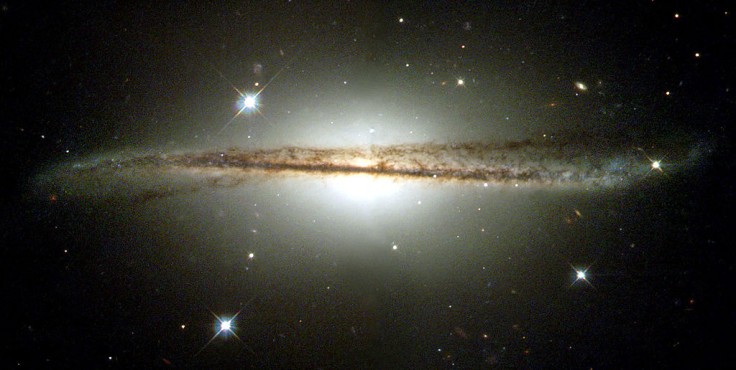
NASA Hubble Space Telescope tweeted two stunning images on its social media page. First is the star cluster NGC 6717, located inside the Sagittarius constellation. Second is the galaxy cluster Abell S1063, teased as a final frontier to our universe.
The NASA Hubble Space Telescope is popularly recognized for rendering beautiful and amazing discoveries on distant galaxies. It surprised researchers and skywatchers with its latest photos, a tribute to Sagittarius people and the popular series "Star Trek."
NASA Hubble Images: Sagittarius Constellation and NGC 6717
Hubble tweeted, "If you're a Sagittarius, you're in luck" alongside a photo attachment of the beautiful star cluster NGC 6717.
What’s your sign? If you’re a Sagittarius, you’re in luck. ♐
— Hubble (@NASAHubble) September 10, 2021
Today’s #HubbleFriday shows a beautiful view located in the constellation Sagittarius. The star cluster NGC 6717 dazzles in this Hubble image from over 20,000 light-years away!
For more: https://t.co/uMhBVxJ3BS pic.twitter.com/pXroemsgAW
NASA explained that the star cluster NGC 6717 is more than 20,000 lightyears away from Earth, in the constellation Sagittarius. It is a globular cluster, which is a spherical collection of stars bound together by gravity.
The photo emphasized this with its star-filled dense center that eventually dispersed on the outside. Note that NGC 6717 and the constellation Sagittarius have skies filled with gas and dust that absorb light in a process called "extinction." NASA said the space telescope used the combination of Advanced Camera for Surveys and Hubble's Wide Field Camera 3 to capture NGC 6717.
It is also worth noting that many stars have crisscross diffraction spikes on the image. These extra bright stars are actually interlopers that reside between Earth and the globular cluster. The diffraction spikes get formed when the light of the interlopers interacts with Hubble's secondary mirror.
'Star Trek' Discoveries: NASA Hubble Images of Final Frontier
Hubble tweeted another photo earlier this week with reference to "Star Trek" adventures. The post explained that "Hubble's Frontier Fields program probed the early universe by studying large galaxy clusters, like Abell S1063, seen from four billion light-years away."
#StarTrekDay reminds us that Hubble gazes into the final frontier every day!
— Hubble (@NASAHubble) September 8, 2021
Hubble’s Frontier Fields program probed the early universe by studying large galaxy clusters, like Abell S1063, seen from four billion light-years away.
"Boldly go" & read more: https://t.co/fLHvXEfSJW pic.twitter.com/nVjJb0to51
Hubble explained on its blog post that "Star Trek" signature phrase "to boldly go where no one has gone before" inspired this photo. Hubble captured many images of very distant galaxies, and some of them showed signs of distorting through a warping-of-space phenomenon predicted by Einstein a century ago.
The photo tweeted is the galaxy cluster Abell S1063. Hubble's technology managed to unveil the space warping phenomena in this photo and emphasize details of Abell S1063. The cluster contained approximately 100 million-million solar masses, 51 confirmed galaxies, and over 400 unconfirmed ones.
The Frontier Fields program that oversaw this space exploration is an ambitious three-year effort between NASA's Hubble Space Telescope, Spitzer Space Telescope, and the Chandra X-ray Observatory. They aim to study more about large galaxy clusters to possibly unlock the mysterious nature of dark matter that comprises most of the mass in the universe.
There might be more exciting space discoveries from this program later this year.
Related Article: NASA Spacewalk Video Today: Cosmonauts Spacewalk for 7+ Hours, Capture Stunning Video of Earth!









